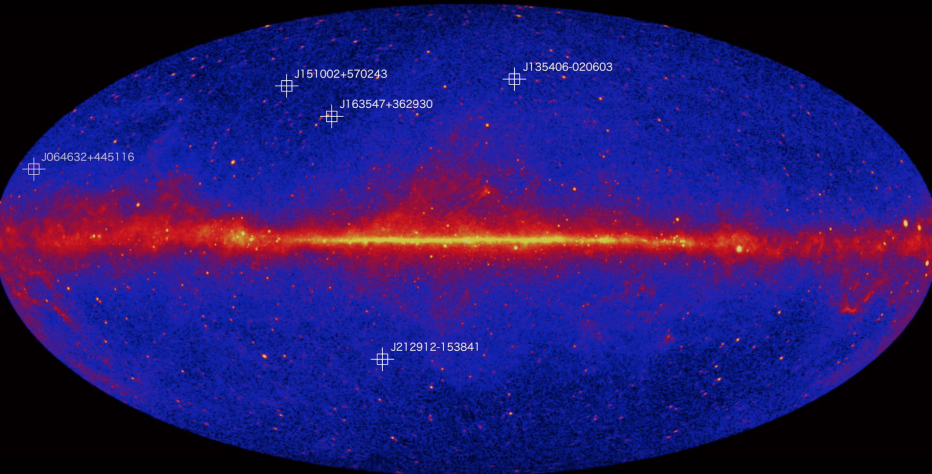
 Credit: NASA; DOE
Credit: NASA; DOE
Giant Black Holes in a Baby Universe
How do supermassive black holes grow and evolve in our Universe? One way to help answer this question is to study black holes at larger and larger distances, which means at earlier and earlier times in the history of the Universe. High energy Gamma-ray emission is a good signature of the presence of a supermassive black hole. This is because supermassive black holes at the centers of active galaxies swallow matter, and this violent process of accretion can produce narrow, powerful high-energy jets of particles and radiation which blast into space for thousands or even millions of lightyears. Blazars are galaxies containing actively feeding black holes in which the jet produced by this accretion is pointed at earth, so that we're treated to a view directly down the high energy beam. As a result, blazars are recognized by their very bright, variable X-ray and Gamma-ray emission. The Fermi Gamma-ray Space Telescope has been monitoring the entire sky in Gamma-rays for more than 8 years, and its sky maps provide the most sensitive measure of high-energy Gamma-ray emission from blazars. A new study of Gamma-ray sources using the entire Fermi data has now revealed, out of thousands of sources detected, five sources (marked in the Fermi Gamma-ray skymap above) which astronomers have identified as the most distant blazars yet seen. The most distant of these blazars was fully formed when the Universe was only ten percent of its current age. This means that extremely massive, actively accreting black holes existed even in the very young Universe. Astronomers suspect that these five galaxies are just the tip of a far larger population of early active galaxies. But how they formed so soon in the history of the Universe is still an outstanding puzzle.
Published: February 6, 2017
<
HEA Dictionary ● Archive
● Search HEAPOW
● Other Languages
● HEAPOW on Facebook
● Download all Images
● Education ● HEAD
>

Each week the HEASARC
brings you new, exciting and beautiful images from X-ray and Gamma ray
astronomy. Check back each week and be sure to check out the HEAPOW archive!
Page Author: Dr. Michael F. Corcoran
Last modified Monday, 26-Feb-2024 17:10:24 EST


